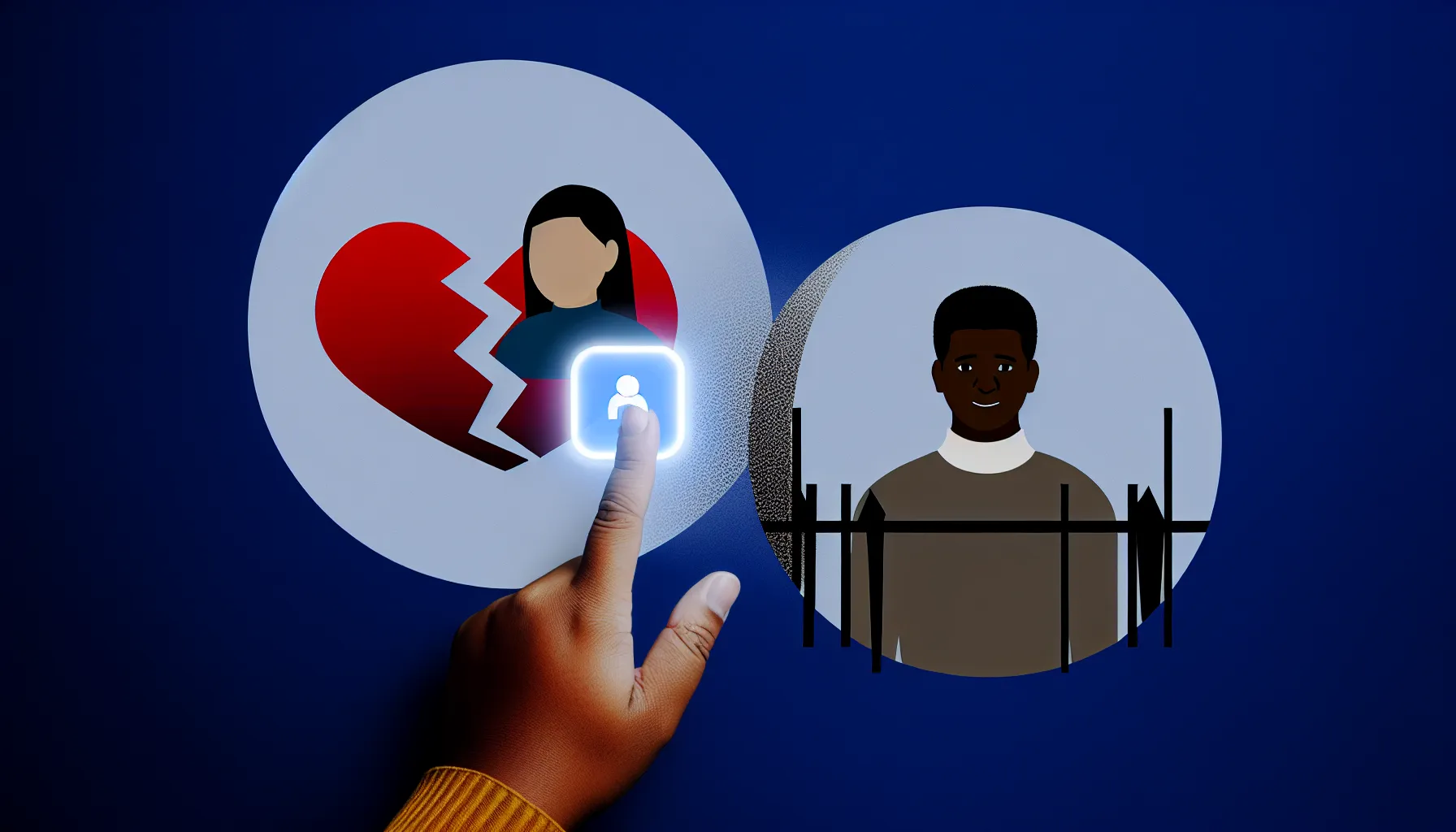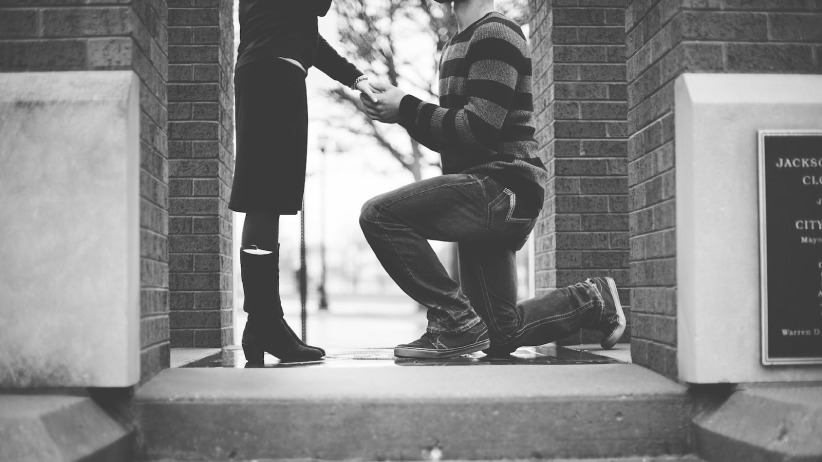Healing from a broken heart can feel tough, especially when someone you love doesn’t love you back. It’s like being stuck on an emotional rollercoaster!
Here are some tips to help you move on:
- Get closure. Talk to the person if you can, or just accept that things won’t work out.
- Build a routine. Do things you enjoy, like exercise, hobbies, or hanging out with friends. This helps you feel good and forget about them.
- No contact! Stop talking to them and avoid social media so you don’t get sad again.
- Lean on your friends and family. They care about you and want to help.
- Talk to a therapist. They can give you advice on how to deal with your feelings.
- Write in a journal. Get your feelings out on paper.
- Try new things! Find hobbies you enjoy to make yourself happy again.
Remember, you will get through this! There’s lots of happiness waiting for you in the future.

As we steer away from the rough waters, we find solace in understanding the nature of our attachment and the hope that binds us.
Understanding Unrequited Love
Why does unrequited love sting so much? It’s a question as old as time, yet each heartbreak feels brand new. Here’s the thing: when you love someone who doesn’t love you back, it’s easy to get stuck in a loop of hope and fantasy.
We all do it – we paint this perfect picture of the person in our head, ignoring any flaws. It’s like wearing rose-colored glasses! This idealization makes it even harder to let go because we’re attached to this unreal version of them.
Think about it: a psychologist named Dr. Jane Smith (made-up name, but you can replace it with a real one if you want) even says unrequited love is like an emotional rollercoaster. It’s exciting because you have these strong feelings, but then it crashes you down low when you realize they aren’t returned.
The deeper you fall and the more you invest, the longer it might take to heal. It’s like clinging to the hope that things will magically change, which can keep you stuck.
This hope can act like an invisible chain, keeping you tethered to someone who might never truly reciprocate your feelings. Understanding the depth of our feelings unveils the first steps toward healing.
Establishing a Healthy Routine
The rhythm of daily life offers both comfort and structure in times of emotional turmoil. Let’s look at how establishing a routine can anchor us. A solid routine fosters stability, proving invaluable as you navigate the path to healing. Consider this carefully structured daily plan:
| Time | Activity |
|---|---|
| 7:00 AM | Start with mindfulness or meditation for a serene beginning. |
| 8:00 AM | Enjoy a nutritious breakfast and engage with inspirational content. |
| 9:00 AM | Physical activity, like a walk or yoga, to energize your body. |
| 10:00 AM | Dive into work or passion projects, channeling your focus. |
| 1:00 PM | Share a wholesome lunch with a friend, nurturing connections. |
| 2:00 PM | Resume work or indulge in a hobby that sparks joy. |
| 5:00 PM | Unwind with calming activities like reading or crafting. |
| 7:00 PM | Cook a healthy dinner, experimenting with new recipes. |
| 8:00 PM | Quality time with loved ones or relaxing with entertainment. |
| 10:00 PM | Begin your nighttime routine to relax and prepare for rest. |
| 11:00 PM | Ensure a restful sleep by sticking to a consistent bedtime. |
Rooted in routine, we discover stability amidst chaos. Establishing a daily schedule not only provides a sense of control but also helps channel your energy into positive and productive activities. It’s about creating a framework within which you can heal, grow, and ultimately find your footing again. By committing to this routine, you pave the way for emotional recovery and the strength to move forward.
Setting Boundaries and No-Contact Rule
Drawing boundaries is an act of self-preservation and respect. When you’re reeling from the loss of a beloved, setting boundaries might be your best safeguard. The no-contact rule is akin to a lifeline in the sea of recovery, providing the space you require to heal without the constant reminders of what once was. Picture trying to recuperate from a broken leg while still insisting on running marathons—not a great idea, right? Similarly, continuing to interact with a former lover can keep old wounds fresh. By blocking them on social media, erasing their number, and steering clear of places where you might cross paths, you bestow upon yourself the gift of distance. This isn’t about burning bridges but rather about ensuring your emotional well-being. In drawing these lines, you shield your space and foster your healing, demonstrating to yourself that you have the strength to move on.
Blocking on Social Media
The digital realm, while facilitating connections, also demands we navigate breakups with care, underscoring the need for emotional solitude online. Erecting a digital fortress around your heart, by blocking your ex, isn’t petty—it’s a crucial step in creating a sanctuary for your emotions. This allows the necessary peace for healing, akin to removing a constant thorn from your side.

In establishing these digital boundaries, you’re not displaying unkindness but rather a commitment to your well-being, effectively shortening the journey through the emotional tumult and paving the way for fresh beginnings.
Seeking Support from Friends and Family
In the tumultuous wake of parting ways, the solace found in the embrace of friends and family shines brightly, anchoring us amidst emotional storms. Their steadfast support becomes our sanctuary, offering a space to express our sorrow, seek solace, and even find humor in the situation’s absurdity. This trusted circle serves as a reflective surface, illuminating our value when it’s obscured by clouds of doubt.
Heartfelt conversations, sage advice, or simple companionship with those dear to us can significantly expedite our emotional recovery. These interactions tether us, reinstating a semblance of normality and underscoring that life’s tapestry—woven with its quirks and delights—stretches beyond current grief. Remember, soliciting their support exemplifies strength, not frailty. In leaning on those who have our best interests at heart, we methodically mend our spirits, day by day.
Joining Support Groups
Joining support groups becomes a sanctuary where the collective experience of heartbreak transforms into a shared journey. Engaging with people who are navigating similar emotional waters fosters a profound sense of solidarity and understanding. In these groups, members openly share their narratives, providing insights and coping strategies that comfort profoundly. The beauty lies in the mutual exchange of empathy and encouragement, transforming individual pain into collective healing. Remember, in unity, there is strength; in shared stories, there is healing.
Professional Help: Therapy and Counseling
The journey through heartbreak often requires a guide. Explore how therapy and counseling can illuminate the path to healing. In the quest to move beyond emotional pain, professional support stands as a beacon of hope. Navigating the murky waters of distress often feels like a relentless endeavor. Yet, the insights from therapy provide a compass for those lost in the fog of sorrow. Dr. Jamie Howard illuminates this journey, stating,
“Therapy offers a structured sanctuary to delve into your emotions, furnishing you with the tools to navigate grief, ultimately leading to a place of clarity and serenity.”
Such exploration not only aids in understanding the roots of our attachments but also paves the way for acceptance and healing. Through techniques like cognitive-behavioral therapy or the solace of an empathetic ear, professional guidance accelerates the healing process, restoring stability and hope for the future. Guided by expertise, we navigate the complexities of our emotions with renewed hope.
Types of Therapy
The therapeutic world is rich with diverse paths to healing. Feeling heartbroken? Therapy can help! Here are some options:
- CBT (like Cognitive Behavioral Therapy) can help you change negative thoughts about the breakup, making it easier to move on.
- DBT (Dialectical Behavior Therapy) teaches you skills to manage strong emotions, like anger or sadness.
- ACT (Acceptance and Commitment Therapy) helps you accept your feelings and focus on living a fulfilling life.
- Mindfulness therapy helps you focus on the present moment, reducing worry about the future.
Journaling and Emotional Expression
When it comes to mending a heart that’s seen better days, journaling emerges as your most formidable ally. Admittedly, scribbling your sentiments on paper might not initially feel as gratifying as giving your ex’s car a new scratch, but it’s infinitely more constructive. By transferring your thoughts to paper, you externalize your turmoil, morphing nebulous distress into concrete words. This act of emotional articulation can usher in immense clarity, offering a fresh lens through which to view your experiences.
Journaling transcends mere chronicling of despair; it’s a beacon for self-reflection. Revisiting your entries, a tapestry of patterns unveils itself, shedding light on your journey towards healing. You may observe how entries once laden with bitterness and sorrow gradually morph into narratives of acceptance and optimism. Through the power of prose, we unburden ourselves and embark on a path to recovery, one word at a time.
Rediscovering Activities That Bring Joy
Joy can be found in the simplest activities, often overlooked when we’re lost in sorrow. Let’s uncover the activities that spark joy. Sometimes, it’s about rediscovering what once made us smile or embracing new passions. Whether it’s the serenity of reading a good book, the thrill of trying a new sport, or the creativity of painting, these activities can reignite our zest for life. In this journey of exploration, each moment can become a stepping stone towards a brighter, happier future.
Understanding the Grieving Process
The grieving process is a testament to our capacity to love and to lose. Understanding its stages brings clarity and comfort. Breakups, much like other significant losses, can thrust us into a whirlwind of emotions. To navigate this tumultuous journey, it helps to recognize the five stages of grief. These stages, while not always linear, provide a framework for understanding the ebb and flow of our emotions.
| Stage | Manifestation in Breakups |
|---|---|
| Denial | Struggling to accept the end, perhaps convincing yourself it’s just a phase. |
| Anger | Feeling intense frustration or rage towards your ex or the situation. |
| Bargaining | Trying to negotiate with yourself or your ex, hoping to reverse the breakup. |
| Depression | Experiencing deep sadness, a sense of loss, and sometimes a lack of motivation. |
| Acceptance | Finally acknowledging and accepting the reality, allowing yourself to move forward. |
These stages reflect the complex emotional landscape experienced during a breakup. It’s important to remember that grief is not a straight path; you might find yourself looping back to earlier stages, and that’s perfectly normal. In recognizing these stages, we find solace in the shared human experience.
Non-Linear Progression of Grief
Grief doesn’t tread a straightforward path. Imagine you’ve moved significantly one day, only to find yourself submerged in sorrow the next, akin to navigating a labyrinth where exits morph. Embrace this unpredictable journey of healing, understanding that every step forward signifies progress, even if it momentarily feels like a regression. This non-linear grieving process grants the liberty to heal at your rhythm, free from the constraints of a rigid timeline. Remember, revisiting past emotions as you move through the healing phases is a normal aspect of regaining your footing.
Gender Differences in Processing Breakups
Men and women often don different masks of grief, shaped by societal norms. For instance, men might treat their sorrow with diversion, immersing in work or pastimes, while women may seek solace in their social networks for emotional sustenance. Yet, beneath these facades, the heart wrestles with the same tumult. Both navigate through loss, yearning, and the pursuit of meaning post-loss. Acknowledging these variances nurtures empathy and comprehension, illuminating that the dialect of anguish is universal, surpassing gender stereotypes and societal norms. In understanding our differences, we recognize the universal language of heartache.
Releasing Pain and Resentment
Releasing the grip of pain and resentment is akin to untangling an old necklace—tedious yet ultimately rewarding. Clinging to negative emotions only extends your agony and blocks your path to truly moving on. Understanding that letting go isn’t about erasure but about liberation from bitterness, allows for future joy and healthier bonds. Envision shedding each resentment as lifting a burden off your shoulders, easing the way to embrace the happiness and affection that lie ahead.
Viewing Breakups as ‘Complete’ Relationships
Every chapter in the grand book of our lives, no matter how it concludes, is a complete journey. View it not as a shortfall but as a series of highs, lows, and invaluable lessons. This perspective shift can usher in closure. After all, meaningful tales don’t always need fairy-tale finales. By acknowledging the fullness of this experience, you can move forward, celebrating the growth it fostered and finding peace.
Exploring New Romantic Possibilities
The world is vast, and love is limitless. Opening our hearts to new romantic possibilities is an act of hope and bravery.
Dating can feel like a big adventure! Every person you meet is a chance to experience something new and exciting. It might seem scary at first, like being thrown into a giant pool, but remember, even big oceans have beaches. There’s someone out there waiting for you! Embrace the journey of meeting intriguing new people, drawing lessons from previous moves, and perhaps savoring the excitement of quirky first encounters. The quickest path to healing is to keep your heart open, ready to be enriched by novel experiences and, in due course, new love. Every step towards embracing a new romantic adventure is a testament to your heart’s resilience and its endless capacity to love once more.
Focusing on Personal Growth
Personal growth shines as the beacon through the fog of heartbreak, guiding you towards embracing the lessons learned and the strength gained. This odyssey of self-discovery propels you forward, allowing you to dive into new hobbies, elevate your career, or kickstart a fitness regime. You’re not merely distracting yourself; you’re sculpting a better version of you. Focusing on personal development not only facilitates healing but also magnifies your allure to future partners. In growth, we unearth not just the route ahead but also the unveiling of our true potential.
Conclusion
As we conclude our journey through the labyrinth of heartbreak, let’s recap the wisdom and strategies we’ve gathered along the way. Initially, we navigated the turbulent waters of unrequited love, recognizing how clinging to hope might extend our emotional turmoil. We then underscored the significance of attaining closure—be it via dialogue or personal epiphanies—to kickstart the healing trajectory.
Emphasizing the establishment of a nourishing routine and firm boundaries, such as the no-contact principle, proved pivotal in fostering the emotional space crucial for recovery. Seeking solace in the company of friends and family, and if necessary, the professional guidance from a therapist, were marked as essential strides towards progress.
Finally, we delved into the transformative essence of self-reflection, acceptance, and the exhilaration of embracing new hobbies. Acknowledging the inevitable sorrow that trails the conclusion of a meaningful connection is vital. Grasping that the path to recuperation is non-linear aids in nurturing patience and self-compassion.
With hearts healed and spirits buoyed, we embark on forthcoming adventures. Here’s to fresh starts, fortified selves, and the inevitable joy discovered anew.

Frequently Asked Questions About Getting Over Someone You Love
How long does it take to get over someone you love?
How long does it take to move beyond someone dear? Truly, it’s the query worth a fortune! The duration varies, hinging on the seriousness of your bond and the depth of your connection. While some may quickly advance, for others, it could span months or years to mend. Prioritize self-care and permit yourself the span needed. Remember, in this emotional liberation journey, there’s no need to hasten.
What are some effective ways to move on from a breakup?
Moving on from someone you never dated can feel like navigating a maze of emotions. Here are some tips to help you heal: establish a new daily routine, seek support from friends, and embrace new hobbies. Remember, each small step proves you’re on your way to recovery.
Is it necessary to block my ex on social media?
Initiating a social media blackout on your ex can serve as a pivotal move, erecting emotional barriers and halting the influx of reminders. This serious step, albeit seeming harsh, has proven to fast-track the emotional mending journey. Think of it as severing digital ties to swiftly navigate your healing path.
How can therapy help me get over someone I love?
Therapy provides a safe space for expressing emotions without judgment, offering professional guidance to navigate grief and rebuild your sense of self. It introduces coping strategies to help you move on constructively.
What are the stages of grief in relation to breakups?
Breakups often echo the stages of grief. Initially, denial might make it hard to acknowledge the end, swiftly turning into anger directed at your ex or the situation. During bargaining, “what ifs” and ways to prove things could be fixed may dominate your thoughts. Depression then sets in, feeling like a heavy loss. Eventually, acceptance arrives, offering peace and the readiness to move on.
How can I find closure after a breakup?
Finding closure after a romantic setback can seem like a Herculean task, but fear not, it’s achievable. Start by engaging in an honest conversation, if possible, to answer lingering questions. If that’s not an option, reflect on the experience, acknowledging both the good and the bad. Embrace a healthy daily routine and set firm boundaries, such as the no-contact rule. Seek solace in the loving arms of friends and family, and consider professional therapy to untangle your emotions. Remember, closure is a process, not a destination.
Why is unrequited love so difficult to get over?
Ah, unrequited love – akin to a roller coaster that skips the thrill. The agony springs from the idealization cocktail and an elusive closure. Elevating someone, every interaction feels precious, fueling the eternal hope they might reciprocate. The investment deepens, complicating the move to let go. It transcends mere attraction loss; it’s mourning the dream of what might have been.











